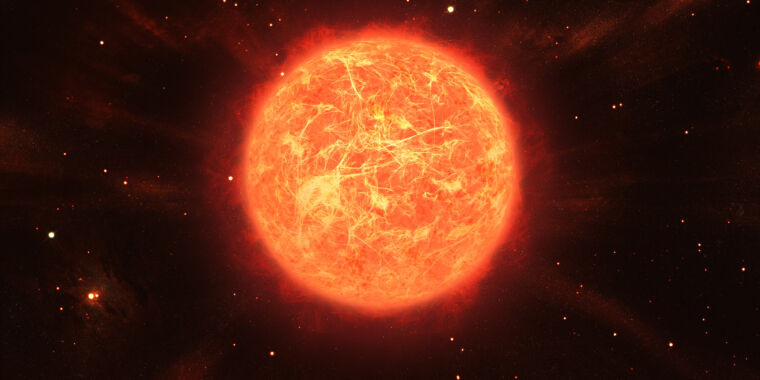I’d wager a guess that we are, as a species, rather fond of our home planet (our wanton carbon emissions notwithstanding). But the ugly truth is that the Earth is doomed. Someday, the Sun will enter a stage that will make life impossible on the Earth’s surface and eventually reduce the planet to nothing more than a sad, lonely chunk of iron and nickel.
The good news is that if we really put our minds to it—and don’t worry, we’ll have hundreds of millions of years to plan—we can keep our home world hospitable, even long after our Sun goes haywire.
A waking nightmare
The Sun is slowly but inexorably getting brighter, hotter, and larger with time. Billions of years ago, when collections of molecules first began to dance together and call themselves alive, the Sun was roughly 20 percent dimmer than it is today. Even the dinosaurs knew a weaker, smaller star. And while the Sun is only halfway through the main hydrogen-burning phase of its life, with 4-billion-and-change years before it begins its death throes, the peculiar combination of temperature and brightness that make life possible on this little world of ours will erode in only a few hundred million years. A blink of an eye, astronomically speaking.
The Sun sows the seeds of its own demise through the basic physics of its existence. At this very moment, our star is chewing through something like 600 million metric tons of hydrogen every single second, slamming those atoms together in a nuclear inferno that reaches a temperature of over 27 million degrees Fahrenheit. Of that 600 million metric tons, 4 million are converted into energy— enough to illuminate the entire Solar System.
That fusion reaction is not perfectly clean, however. There is a leftover byproduct, an ash created by the nuclear fires: helium. That helium has nowhere to go, as the deep convection cycles that constantly churn material within the Sun don’t reach into the core where the helium is formed. So the helium sits there, inert, lifeless, useless—clogging up the machine.
At its present age, the Sun does not have high enough temperatures and pressures at its core to fuse helium. So, the helium gets in the way, increasing the overall mass of the core without giving it anything else to fuse. Thankfully, the Sun is easily able to compensate for this, and that compensation comes about through a bit of physics known as hydrostatic equilibrium.
The Sun exists in constant balance, living on the edge of a nuclear knife. On one side are the energies released by the fusion process, which, if left uncontrolled, could threaten to explode—or at the very least, expand—the Sun. Countering that is the immense gravitational weight of the star itself, pressing inward with all the might that 1,027 tons of hydrogen and helium can muster. If that force were to go unchecked, the Sun’s own gravity would crush our star into a black hole no bigger than a mid-sized city.
So what happens when an unstoppable force meets an irresistible pressure? Graceful balance—and a star that can live for billions of years. If, for some reason, the nuclear inferno randomly ratchets up in temperature, that will heat up the rest of the star and inflate its outer layers, easing the gravitational pressure and slowing down the nuclear reactions. And if the Sun were to randomly contract, more material would force itself into the core, where it would participate in the heady nuclear dance, and the release of energy that results would conspire to reinflate the star to normal proportions.
But the presence of helium ash, that nuclear trash, upsets that balance by displacing hydrogen that would otherwise fuse. The Sun can’t help but pull inward on itself—gravity is uncompromising and uncaring. And when it does, it forces the nuclear reactions of the core to increase in ferocity, raising its temperature, which in turn forces the surface of the Sun to swell and brighten.
Slowly, slowly, slowly, as helium continues to build up in the core of the Sun (or any other star of similar mass), it expands and brightens in response. It’s difficult to predict exactly when this brightening will result in calamity for our planet—that depends on a complex interplay of radiation, atmosphere, and ocean. But the general estimate is that we have roughly 500 million years left before life will become all but impossible.

